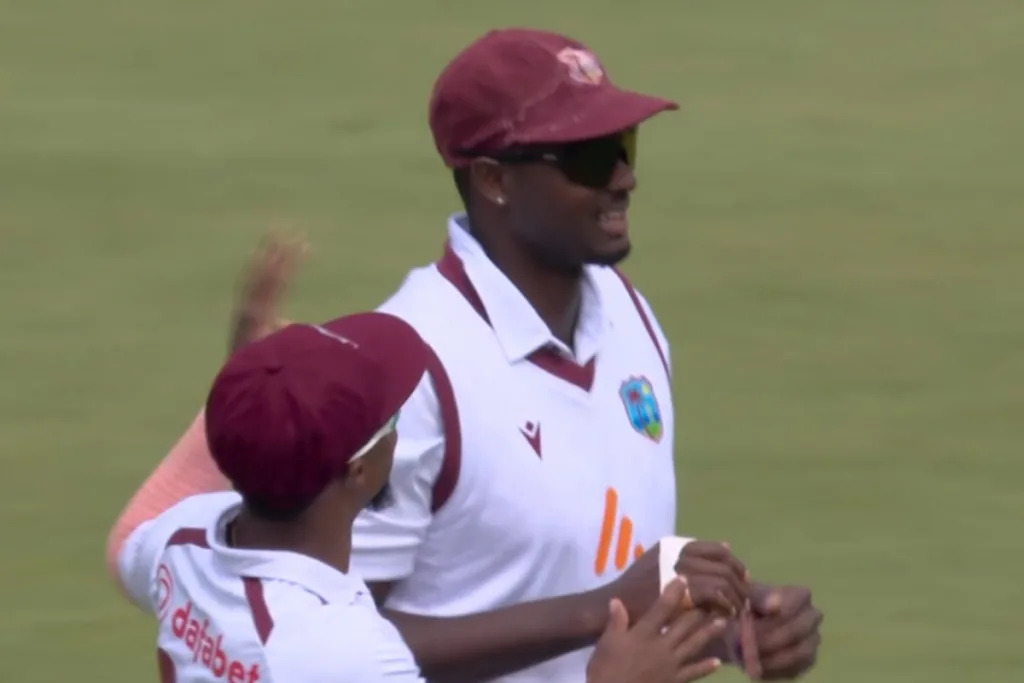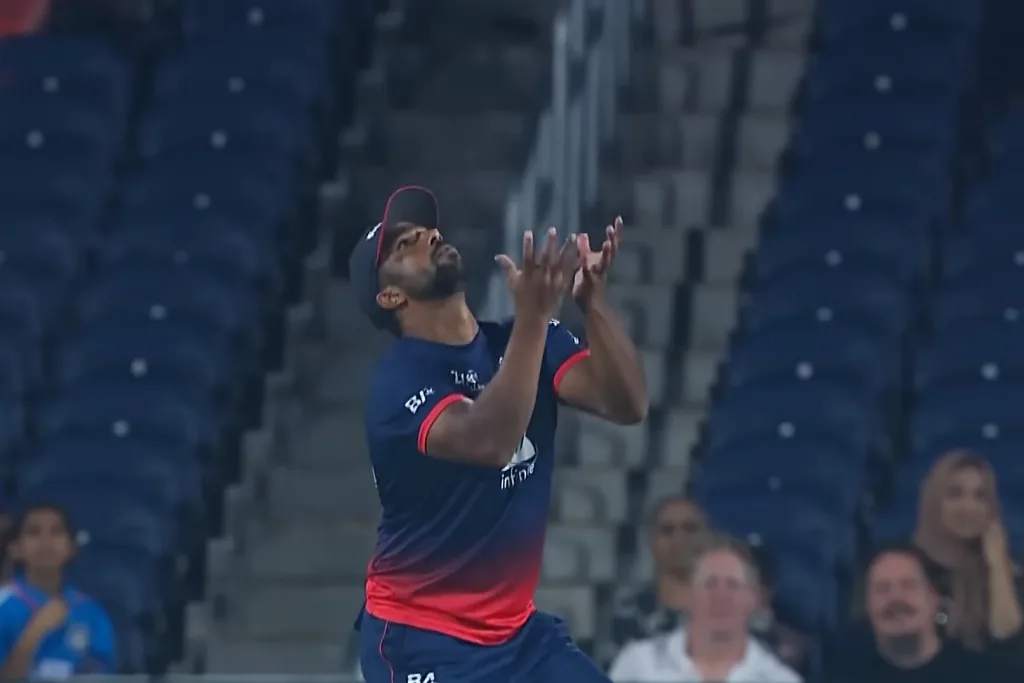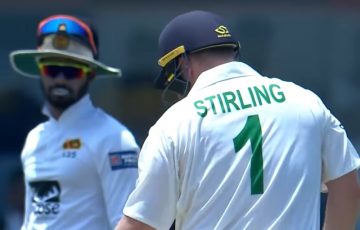What did you do just then? Did you just glance at a TV when some cricket was on? Did you invest 10 seconds setting the on-screen player names alongside the three-letter initialisms in the hope of working out what competition it was? That’s enough. You’re a viewer now – a fan even.
We’re exaggerating of course, but in the long-term the money for these franchise tournaments has to come from somewhere and so they do need to attract a significant audience.
In the short-term, you have “investors” of course – but investors make an investment. Once a league’s burnt through that initial influx of cash, the idea is that the money is by that point flowing in the opposite direction.
That money is basically going to be marketing money: direct sponsorship of the tournament and elements thereof, or TV deals most likely funded by advertising.
If we had “marketing bucks” to spend, we’d be very hesistant about sinking a few million into even an above-average franchise league.
The LPL
We understand the Lanka Premier League is foundering. Sponsors are in and out, team names are changing from one season to the next and no-one’s really attending the games.
Comparisons have been made with the ‘star power’ of Major League Cricket (MLC) over in the US, which is running concurrently. MLC has also been getting quite a few recent mentions for drawing big name players away from The Hundred.
Clearly MLC is the big player here – the future, if you will. We therefore took the opportunity to do some in-depth research and we can now reveal our findings.
After loading a handful of highlights videos and watching a couple of boundaries in each of them, we can exclusively reveal that barely anyone is going to watch MLC games.

For the players on the field, it must be a deathly hollow experience, the club game atmosphere only brought into even sharper focus by the inexplicability of the massive expansion of their wallets.
We mean that kindly. Rarely has professionalism looked less appealing.
Once again, we find ourself asking this question.
Today at the Test
Bums-on-seats analysis suggests England v West Indies is doing rather better, but maybe this is where bums-on-seats analysis falls down. It provides a nice snapshot, but doesn’t shed much light on mood or trends.

A personal view is that the second Test would have made a great first Test. The West Indies were the better team for the first half of the match – most obviously when the tail was gleefully wagging and whipping England’s forlorn bowlers. But then, as so often happens in hard-fought Test matches, they cracked. The relentless mental exertions took their toll and the Jenga tower of their second innings went down in an almighty hurry.
The scale of the 241-run loss was therefore a little misleading. If that had been all we’d seen at that point, the next two Tests would have felt pretty intriguing. Unfortunately, there is only one more Test because that second Test tussle had been preceded by the kind of scuttling you so often get at the start of these tours, when half the players have barely had time to notice what country they’re in, let alone what colour ball they’re using.
Taken in isolation the second Test might have built interest in the series, but serving up a 241-run loss straight after an innings defeat instead drained a load of it away.
A lot of factors affect ticket sales (and the inclination to watch Test cricket on TV) but these kinds of things chip away at public appetite for future tours.
The playing staff
Depending who you are and how closely you follow cricket, there may well also be some awareness that the West Indies Test team faces greater headwinds than the England one. The cliché used to be that all the best athletes over there were choosing basketball, but it’s a lot more obvious what they’re losing players to these days. They’re losing them to cricket.

It would be overstating things to call it a miracle that the Windies have managed to find a bunch of cricketers so thoroughly committed to Test cricket at the expense of other opportunities, but it’s certainly an impressive feat. First-class cricket is not a big earner in the West Indies, but most of this squad have worked hard at the longer format when they could quite easily have steered the bulk of their training in another direction.
Jason Holder is good enough to have had a foot in both camps. Neil Manthorp reports that four ago, at the age of 29, he had floated 30 as being the right age to narrow his focus and start cashing in. Yet here he is, still plugging away.
Of course not everyone prioritises the same way and the Test team has unarguably suffered as a consequence. The talent pool is not gargantuan and T20 cricket is something of an open plughole.
The big game
That format v format cannibalisation of the sport plays out pretty much everywhere, to a greater or lesser extent. Test matches are very rarely the Best v Best ultimate battles we would like them to be.
Something similar applies in T20 tournaments, where there’s a temptation to devise metrics to help measure the shallowness of the competition as a whole.
Across formats, games are routinely compromised, and the frustrating thing is that the more you get into cricket, the more you’re likely to be aware of that.

The whole sport seems increasingly geared towards the casual fan.
No, not that actually. The whole sport increasingly seems shaped to hoodwink the casual fan. It comes across like some AI-generated representation of top level cricket, where much of the surface detail is present but the key elements are mystifyingly absent.
The word ‘shaped’ is misleading there though, implying as it does the attainment of some deliberate goal. The reality is everyone is shooting for The Best v The Best with a large audience devoting its full attention. It’s just they’re all trying to build their bold Lego edifices using the same damn bricks.
Everything is spread so thinly, it’s no wonder the attention we pay is often correspondingly shallow.
Taking turns
Let’s ask it again: How popular are all these Not-Quite-The-IPL franchise leagues actually likely to be?
With giant crowds and a gargantuan home market, the world’s foremost T20 competition fundamentally makes sense. The idea that T20 franchise cricket is therefore some giant pie from which everyone can take a slice is however surely just a nonsense.

The LPL is a totally different pie. MLC is a knock-off version of the IPL pie where highly questionable alternatives have been used in place of several of the key ingredients. The Hundred is another pie again. All also doubly suffer from the ready availability of other pies.
Just on the most basic level, how can it be worth paying players hundreds of thousands when you can’t even get anyone to come down and watch? How can that be sustainable?
TV deals, you say? It strikes us that the value of that particular brand of inattention may be poorly quantified. Perhaps there’s a significant subliminal impact from half-hearing an ad coming from a TV that’s on in the background, but we doubt it’s considerable. It’s certainly not what we would call ‘high quality brand exposure’.
Our feeling is that outside the IPL there is currently more money flowing through all forms of cricket than actually makes sense. (And even where it’s not actually flowing yet, it’s being anticipated – no doubt driving up spending elsewhere.)

Test cricket is not in a strong position here. Even if the people currently sluicing money into the sport later think better of it, that influx of cash still skews the present because it is all going into the shortest format on the basis that no-one can quite work out how to monetise the longest one.
Plenty of T20 leagues will fail, but what will Test cricket look like when they do? An ongoing Australia-England-India tri-series broken up by stunted, one-sided tours conducted by B-teams? That doesn’t sound too vibrant or healthy.
Test cricket’s costs are at least familiar. If the majority of franchise leagues come across as bubbles just waiting to burst, the five-day game is so deflated any kind of pop is by this point surely an impossibility.
Perhaps with fewer “opportunities” for top level cricketers, the Test game will return to being one for a few more of them. The knock-on effect might mean it again becomes a bigger draw for fans – particularly if there are fewer competing events.
The obvious conclusion here is that for all administrators would have you think otherwise, “more money coming into the sport” isn’t necessarily a good thing.
Further reading: The ‘Test cricket doesn’t fit into modern life’ fallacy
Thanks to everybody who’s currently funding King Cricket on Patreon. Your pledges help us do features like this. If you’re not currently a King Cricket patron and you’d like to see us to do more with the site, you can flip us a shiny coin or buy us a pint each month here. Don’t feel you have to, but huge thanks if you do.




On the subject of bemusing Hundreds, I thought readers would like to know that English has just scored one for Scotland in the ODI vs Namibia.
Lovely stuff. The Hundred remains sugary nonsense.
My bum is currently on a train, preparing to take its seat at Edgbaston tomorrow.
I believe Ged and Daisy’s respective bums are already there.
This is why I prefer to watch games such as Nigeria vs Kenya or the current Scotland vs Namibia (even if it is an ODI, and Namibia’s wickets are tumbling for not many runs). No accompanying, overt, money-making, flash, bang, wallop, witless, nonsense, and the watching crowd allowed to sit on the boundary to nom on their sandwiches. Very civilised.
59 extras, including 42 byes, in IRE’s first-innings 250 vs ZIM today. Fine work there.
Is anyone finding the new BBC scorecard format to be, well, a bit pants?
Excellent piece KC – clearly you are becoming a pundit and an influencer in this space.
Evidence? Some bloke came up to me at the test match today and asked me if I had read this latest piece on King Cricket.
What were the odds on that?
All sorts of weirdos on the internet nowadays.
Indeed, Sam – and in the Raglan Stand.
Fantastic to hear you’re all spreading the word to each other.
“Going viral” has to start somewhere, KC.
I was thrown out of the Raglan stand on a clothing technicality. “I think you should sleeve”, they said, as I was forcibly ejected by the collar.
MLC is stupid. They’ve launched it two years (at least) before most of the teams have anywhere to play, so they’re still playing at two central locations.
Calling a team “Seattle” but only playing in Texas or North Carolina is daft (the Orcas part is only marginally better).
If they ever get up here I will probably try to catch a game although for three hour and and ball games I am, by now, thoroughly baseball-pilled (as the kids say).
At least orcas are somewhat part of the regional identity. Better that than ‘Kings XI Bremerton’. I would have called the team ‘Seattle Underground’.